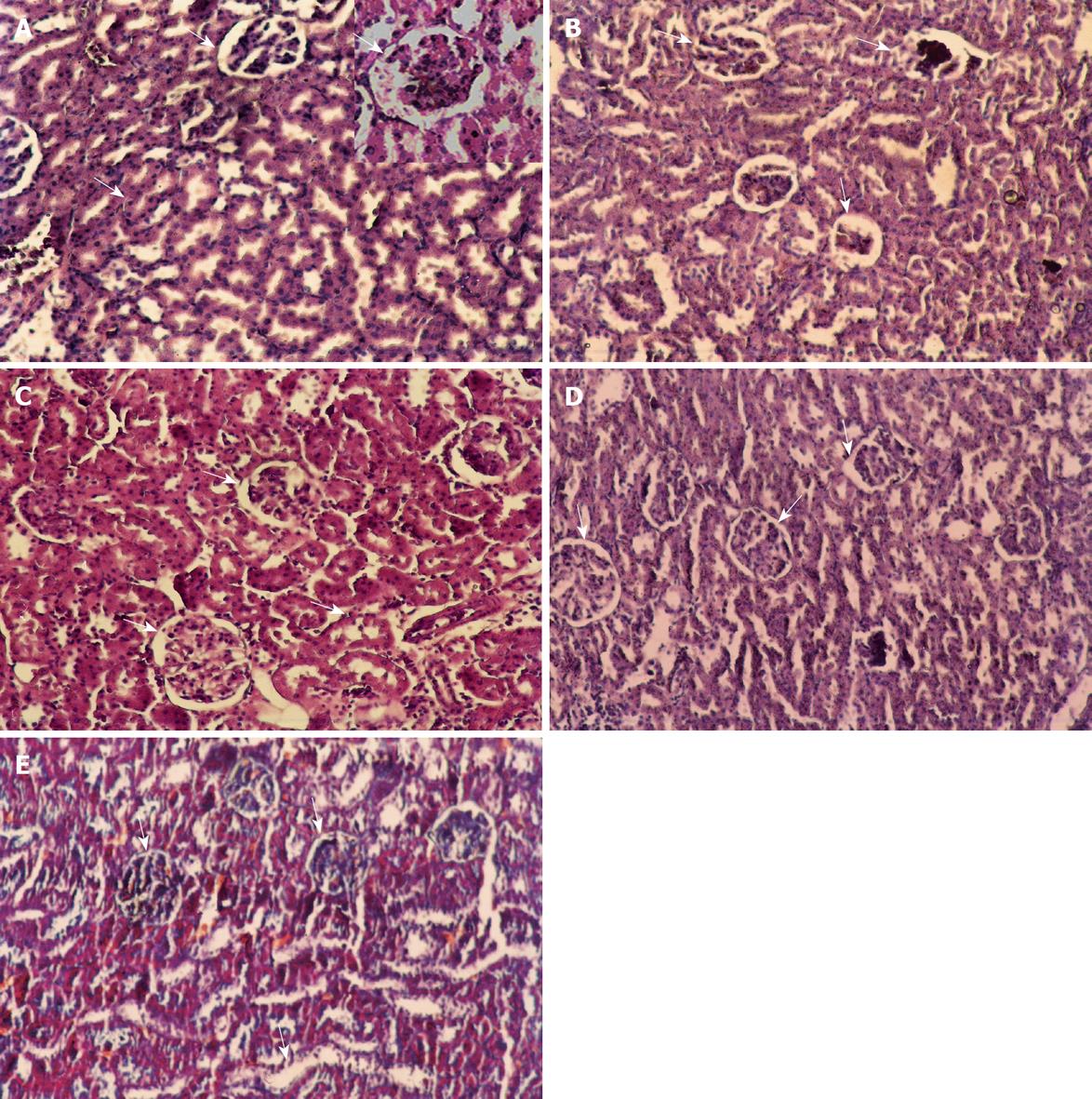Copyright
©2010 Baishideng Publishing Group Co.
World J Gastrointest Pharmacol Ther. Dec 6, 2010; 1(6): 123-131
Published online Dec 6, 2010. doi: 10.4292/wjgpt.v1.i6.123
Published online Dec 6, 2010. doi: 10.4292/wjgpt.v1.i6.123
Figure 5 Histological appearance of the kidney (HE staining).
A: Section of control kidney showing a normal histological appearance glomeruli and tubules (arrows) appear normal (× 100), with higher magnification section (× 200); B: Renal cortex in CCl4 (24 h) group. Segmental glomerular necrosis (arrows) seen, tubular dilation (arrows) and detachment of tubular epithelial cells also visible (× 100); C: Renal cortex in CCl4 + Cupressus sempervirens group, glomeruli and tubules (arrows) appear normal in cortex (× 200); D: Renal cortex in CCl4 + Juniperus phoenicea group, glomeruli and tubules (arrows) appear normal seen in cortex (× 100); E: Renal cortex in CCl4 group (1.5 mo, self-recovery) group. Vacuolization, atrophy and detachment of tubular epithelial cells (arrows) seen (× 100).
-
Citation: Ali SA, Rizk MZ, Ibrahim NA, Abdallah MS, Sharara HM, Moustafa MM. Protective role of
Juniperus phoenicea andCupressus sempervirens against CCl4. World J Gastrointest Pharmacol Ther 2010; 1(6): 123-131 - URL: https://www.wjgnet.com/2150-5349/full/v1/i6/123.htm
- DOI: https://dx.doi.org/10.4292/wjgpt.v1.i6.123









